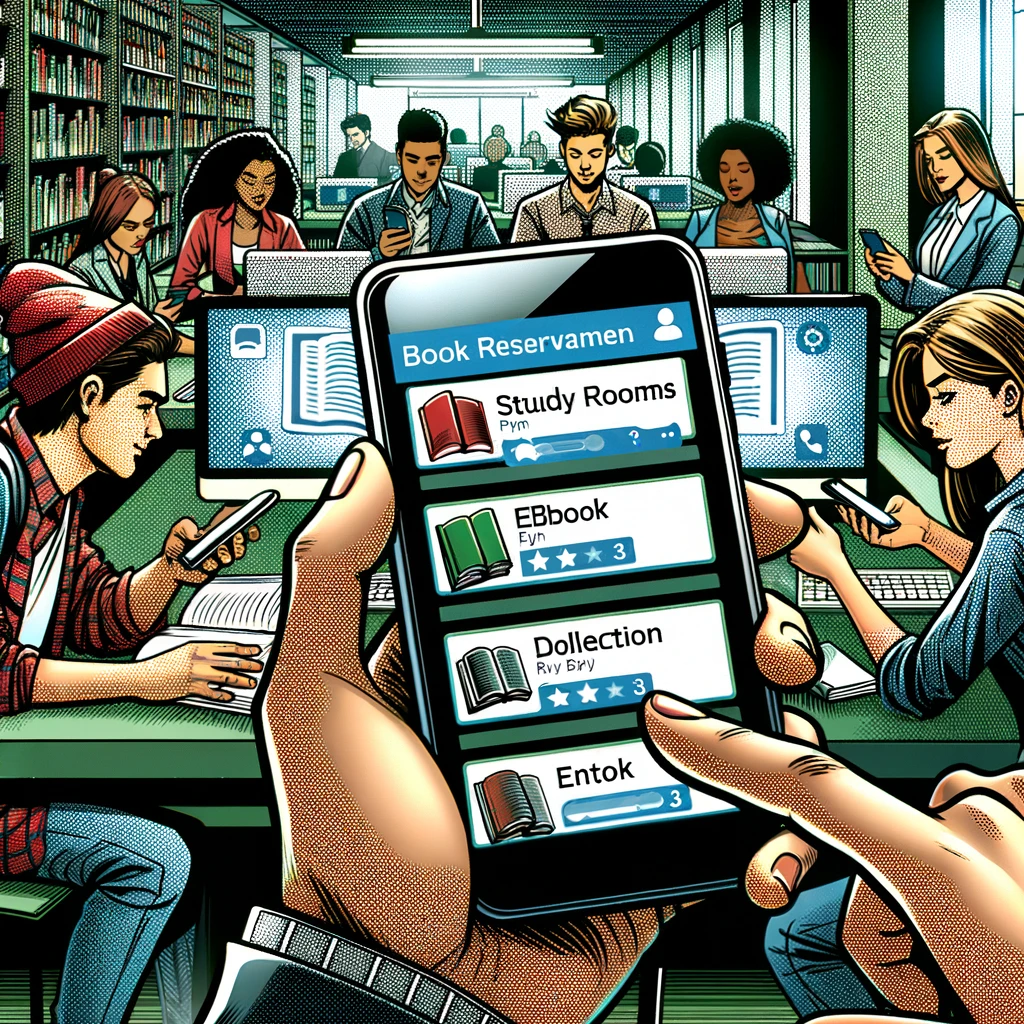Estimated reading time: 6 mins
Table of Contents:
- Key Takeaways
- Cultivating a Digital Campus Environment
- Elevating Communication and Interaction
- Facilitating Academic Success
- Enhancing Campus Navigation and Facilities
- Engaging Alumni Through Mobile Connectivity
- Utilizing Data to Advance University Goals
- Adapting to the Tech-Savvy Generation
- Realizing Cost Benefits and Eco-Friendly Practices
- Maintaining Relevance with Adoption and Updates

Key Takeaways:
- University mobile apps play an essential role in modernizing the campus experience, enabling a digital learning environment that is both accessible and engaging.
- Effective mobile solutions enhance community, streamline communication, and provide invaluable insight through data analytics.
- The proactive adoption of technology aligns higher education institutions with the expectations of digital natives, improving student recruitment and retention.
- Economic and sustainable benefits emerge as mobile technologies replace outdated processes and reduce the environmental impact.
Cultivating a Digital Campus Environment
Integrating mobile technology on campus is revolutionizing university life, from the classroom to the daily interactions between students and staff. University-branded mobile apps are becoming central to their ecosystems, offering diverse functionalities such as access to academic resources, event planning, administrative services, and more. Utilizing an app that embodies the institution’s character enhances not only the accessibility of information but also fosters a stronger campus identity and unity.
These apps’ digital campus environment can become the cornerstone of university culture. Providing a hub accessible around the clock breaks down barriers to education, enables immediate dissemination of critical information, and encourages active participation from the entire academic community. Such ubiquity of interaction and access speaks volumes to the dedication of universities to creating unparalleled experiences for their students and staff.
Elevating Communication and Interaction
Mobile apps for universities serve as conduits for communication, ensuring everyone on campus stays updated with the latest news, schedule changes, and academic requirements. This timely and efficient exchange of information is vital in cultivating an engaging educational arena where the flow of information is seamless. Immediate notifications about campus events can increase participation, enhance student engagement, and support a richer college experience. When alerts about important dates like registration deadlines are delivered promptly through an app, it mitigates the risk of missed opportunities and student frustration.
The very nature of these apps promotes a social dynamic that’s invaluable for building relationships among students, faculty, and alums. Discussion boards and group messaging functions open channels for dialogue, collaboration, and support that can extend far beyond the physical confines of the campus. This creates a virtual community that is both vibrant and cohesive, reflecting a modern, interconnected world.
Facilitating Academic Success
Mobile applications provide a powerful interface for academic administration, enabling students to register for classes, check their grades, and receive critical academic notices directly on their devices. This anytime, anywhere approach to academic information keeps students informed and engaged with their educational progress. By integrating digital assessment tools and feedback mechanisms, universities can create a responsive and adaptive academic environment that aligns with how students work and study today.
Flexibility and adaptability are at the forefront of quality education in the digital age. As students seek educational experiences that fit their lifestyles, mobile apps are crucial in providing tailor-made learning experiences. Furthermore, with features like virtual classrooms and library access, students have all the tools they need to succeed. This accessibility is crucial for promoting self-paced learning and accommodating diverse student needs.
Enhancing Campus Navigation and Facilities
An intuitive mobile app vastly simplifies finding one’s way through the myriad of campus buildings and services. Whether first-years trying to locate their lecture halls or visitors seeking the admissions office, a well-designed app can easily lead them to their destinations. Beyond just wayfinding, integrating a booking system for study rooms, equipment rentals, or recreational facilities elevates the app’s utility, making it an indispensable tool for the campus community.
Streaming campus facility usage into a single interface fosters autonomy and enhances operational efficiency. By leveraging the widespread use of smartphones, universities can maximize their infrastructure and resource allocation, ensuring that every student can take full advantage of what the campus has to offer.
Engaging Alumni Through Mobile Connectivity
Alumni represent a university’s heritage and future. They are crucial supporters and ambassadors in the broader community. A dedicated mobile app can inform this vital cohort about campus developments, alumni events, and fundraising campaigns. Their involvement via the app can lead to impactful contributions, from participation in mentorship programs to financial donations that reinforce the institution’s vision and goals.
With technological advances simplifying how people connect and interact, it’s only logical for universities to capitalize on these tools to strengthen their alum alumni networks. Encouraging user engagement through content that resonates with alum experiences and interests ensures a sustained relationship that benefits the alums and the university long after graduation.
Utilizing Data to Advance University Goals
Data management is integral to the strategic direction of modern institutions. By deploying mobile apps, universities open a treasure trove of data that, when analyzed, uncovers insights into student preferences and campus trends. Administrators can better understand the ebbs and flows of campus life, such as peak times at the gym or library, helping to optimize services and facilities across the board. When student feedback and usage patterns are harnessed to guide decisions, the entire university ecosystem can adapt and grow in alignment with the community it serves.
This comprehensive understanding also extends to ensuring student safety. By monitoring app usage; universities can gain a clearer picture of campus movements and activities, enabling them to identify and bolster safety measures as needed. The resultant increase in institutional knowledge underscores the capabilities of mobile apps far beyond mere convenience or communication.
Adapting to the Tech-Savvy Generation
Universities continually seek to align their services with the expectations of their digitally adept student population. With the advent of mobile apps, educational institutions are committed to leveraging technology to enhance the student experience. This approach is vital not just in appealing to current students but also in attracting future classes. An institution that innovates and adapts its offerings to suit the lifestyles of digital natives attests to a forward-thinking mindset, an appeal crucial in today’s competitive education landscape.
By introducing mobile apps, universities show that they value and understand the importance of technology in everyday life. Students looking for a modern, tech-forward university will find a compelling reason to choose an institution that has invested in digital infrastructure and innovative solutions designed to meet their needs.
Realizing Cost Benefits and Eco-Friendly Practices
Implementing mobile apps in universities touches upon both economic and environmental responsibility. Reducing paper use alone signifies a notable step towards sustainability, as digital dissemination of materials reduces waste and the need for physical storage. These actions reflect the growing consciousness around environmental stewardship that resonates with staff, students, and the community.
Administratively, the efficiency gained through mobile apps translates into cost savings. When manual tasks are automated and digitized, fewer resources are required for completion. Over time, these savings can be redirected toward further educational enhancements or facilities upgrades, perpetuating a cycle of continuous improvement and innovation.


Maintaining Relevance with Adoption and Updates
More is needed to launch a university mobile app; ongoing engagement and relevancy are paramount for long-term success. Continuous improvement based on user feedback and regular updates keeps the app at the forefront of technological advancements. This responsiveness to the needs and desires of the user base ensures that the app becomes an integral part of campus life.
Universities that consistently demonstrate the value of their mobile app through clear communication and feature enhancements encourage regular use and deepen reliance on the app as a critical resource for campus engagement. By remaining committed to the app’s development and place within the university, institutions maintain a dynamic and evolving presence that mirrors the objectives and visions they uphold.
